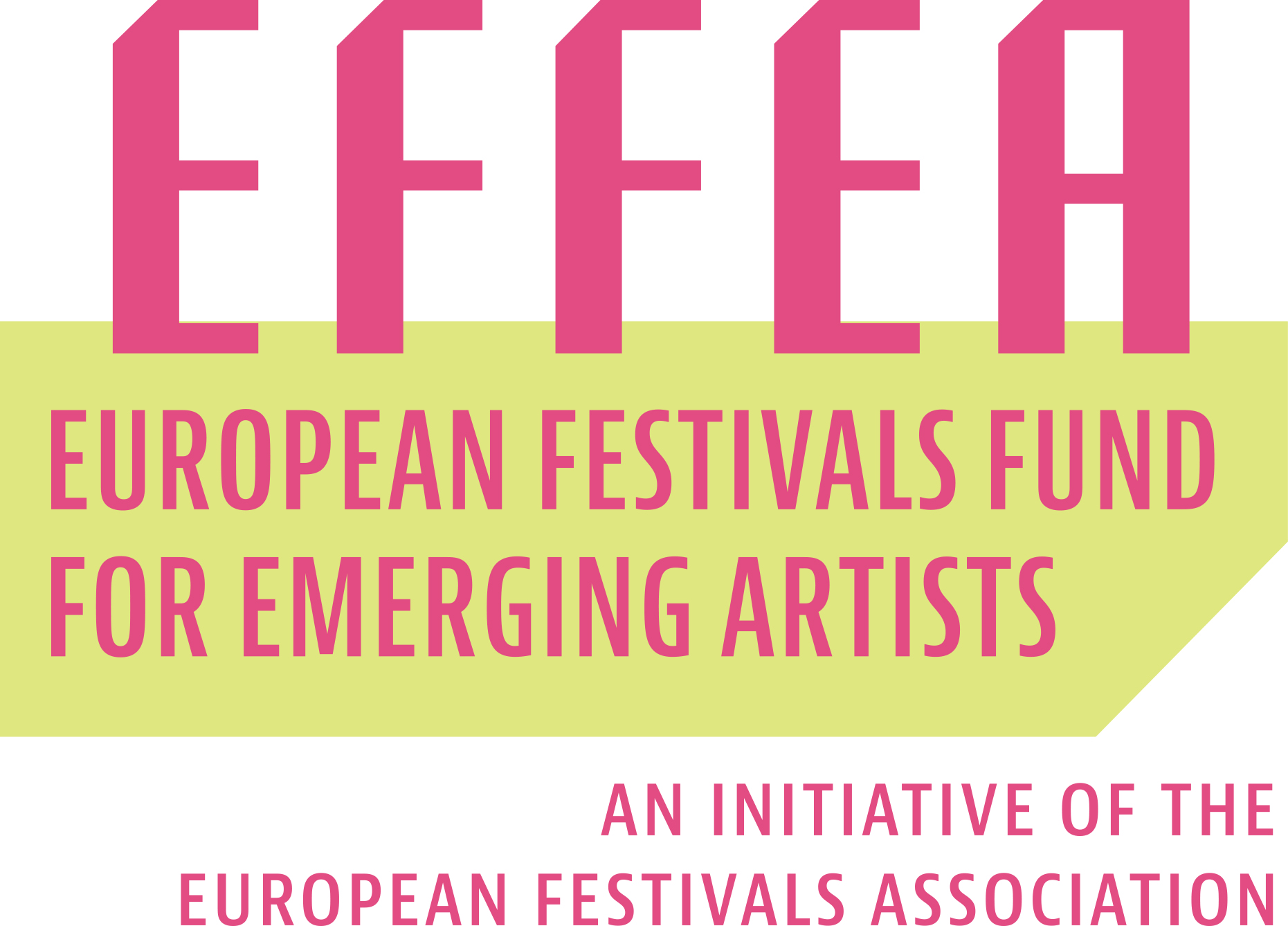Residency of András László, presented by Mumush in partnership with Goulash Disko Festival, Malomfesztivál & Kolorado Festival
As part of his EFFEA Residency under the wings of leading festival Mumush and partner festivals Goulash Disko Festival, Malomfesztivál and Kolorado Festival, EFFEA Artist András László Nagy has been developing 'NEXUS', an immersive digital artwork that explores interconnected human experiences in a tech-driven world. Inspired by technology, nature and human connection, 'NEXUS' prompts curiosity, contemplation and reflection on the networks shaping the world. Nagy’s work focuses on developing innovative visual languages within generative and interactive media, characterised by his unique, abstract and minimalistic style.

Between 18 and 25 April, we had a 1-week creative camp at Mumush-land where we started designing the appearance, sound and lighting of the installation. We spent a few days drawing and brainstorming. After determining the materials, we procured them. We assembled an approximate framework and began testing the behaviour of the optical fibres. From the light source and energy usage perspective, we chose the most economical solution: we will shine a 3W laser into one end of the optical fibres, while the other end will spread the light in a circular shape on the ground, covering a 3-meter radius. We wanted the audience to interact with the installation, so we incorporated a LiDAR sensor, which is actually a rotating distance-measuring laser. We aimed for omnidirectional sound, seamlessly integrating the system into the installation without appearing as an external device.
We also wanted to hide LED controllers and lights within the installation to give the framework some hidden illumination. The brain of the entire installation is a software called TouchDesigner, which connects all external electronic devices and communicates with them simultaneously using a central visual programming language.

Three people participated in the artist residency, and we divided the tasks. Áron Telegdy worked on the sound. He tested various audio VSTs and built the interaction between the LiDAR and the sound. The cover of the LiDAR sensor was made by us since it had no box. Eapo worked on an ESP32, which controls the LED lighting. Wurki and I simultaneously tested the laser and optical fibres and compared the materials. We put a lot of thought into the material for the top. We considered plexiglass but ultimately decided on wood because it is easier to work with.
A construction order with an important hierarchy emerged. The technical elements from top to bottom were arranged as follows:
- Roof - waterproof layer
- LiDAR Sensor - laser distance meter
- Electronic devices, computer, router, 12v power supply, amplifier, sound card, LED controller, ether dream (laser controller)
- 3W RGB laser
- 6 Speakers
- Sound funnels designed at the right angle to make the sound system waterproof and reflect sound into the visitors' ears
- Optical fibres of two types: Side Glow and End Glow
- Legs (massive but interesting)

Given all of these factors, we wanted the appearance to resemble an organic form of some kind. Mushrooms seemed like a good example since they have a cap, a body, and mycelium strands running in the ground, which the optical fibres will represent.
Unfortunately, one week proved insufficient for complete implementation, but it was an important milestone for starting the construction and testing the concept. We ended our time together with a sense of sadness and eagerly anticipated continuing the work. As a final step, we walked in the Mumush forest to find optimal places for this installation.
We took the installation elements to my workshop in Hungary, where we executed the final plans based on the experiences from Mumush-land. The work took us about a month, with both of us actively working on it daily. We meticulously planned each element before we began building it. That is how the roof structure was created, along with the legs and sidewalls housing the electronic devices. 3D printing was used for the ventilation elements, 6-output audio amplifier unit and sound funnels.

Interestingly, the sound funnels were designed with optical reflection in 3D software by giving the entire funnel a reflective surface, setting the viewer's head height, and checking if the speaker was visible in the funnel's reflection. If visible, it was likely that the sound would also be reflected into the ear.
We barely finished in time for the first showcase - the paint was still drying during transportation and we applied the final layers on-site.
During the 4-day festival, valuable feedback from visitors guided the ongoing developments. We encountered technical problems, such as the time-consuming process of precisely aligning the laser to the ends of the optical fibres. Previously, we did this by having someone stick their head near the laser and observe the light beams while another person adjusted the laser points in the software. We replaced this with a web camera, allowing us to see and move the laser points in the software simultaneously.

Another oversight was revealed in 3D printing. The ventilation slots were too long, causing warping due to dilation caused by the sun's heat. To solve this, I reprinted everything with reinforced vertical elements.

What remains to do before the next exhibitions:
- Integrate LED strips and optical fibres into the speaker funnels and roof element
- Improve interaction to better respond to various human behaviours
- Make it resemble the forest and mushrooms more closely in appearance and sound
- Repaint elements
Dates of presentations:
Kolorádó Festival, Nagykovácsi, Hungary: 3 - 6 July 2024
Malomfesztivál, Orom, Serbia: 8 - 11 August 2024
Mumush, Adrianu Mare, Romania: 15 - 19 August 2024
Goulash Disko, Komiza, Croatia: September 2024
